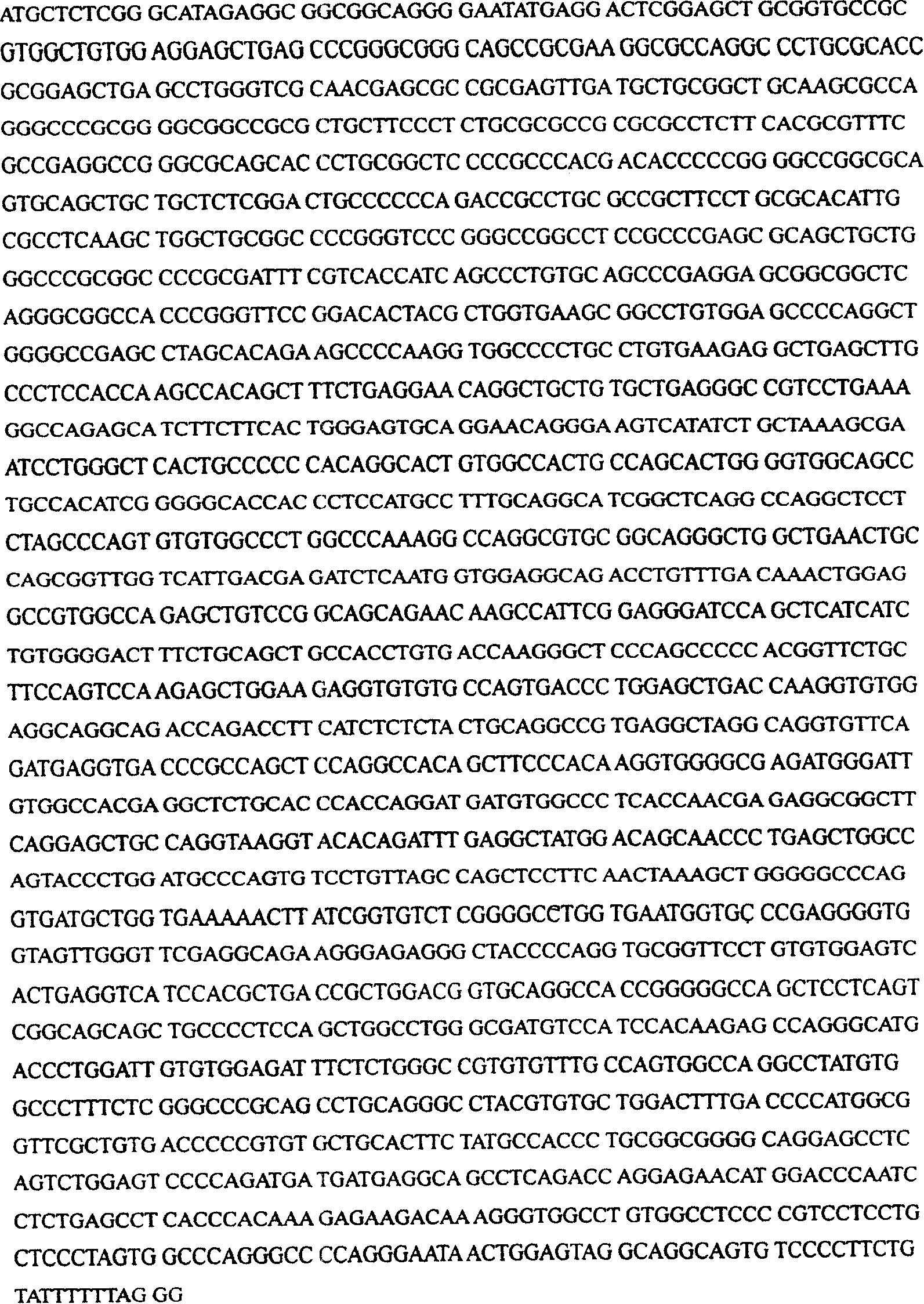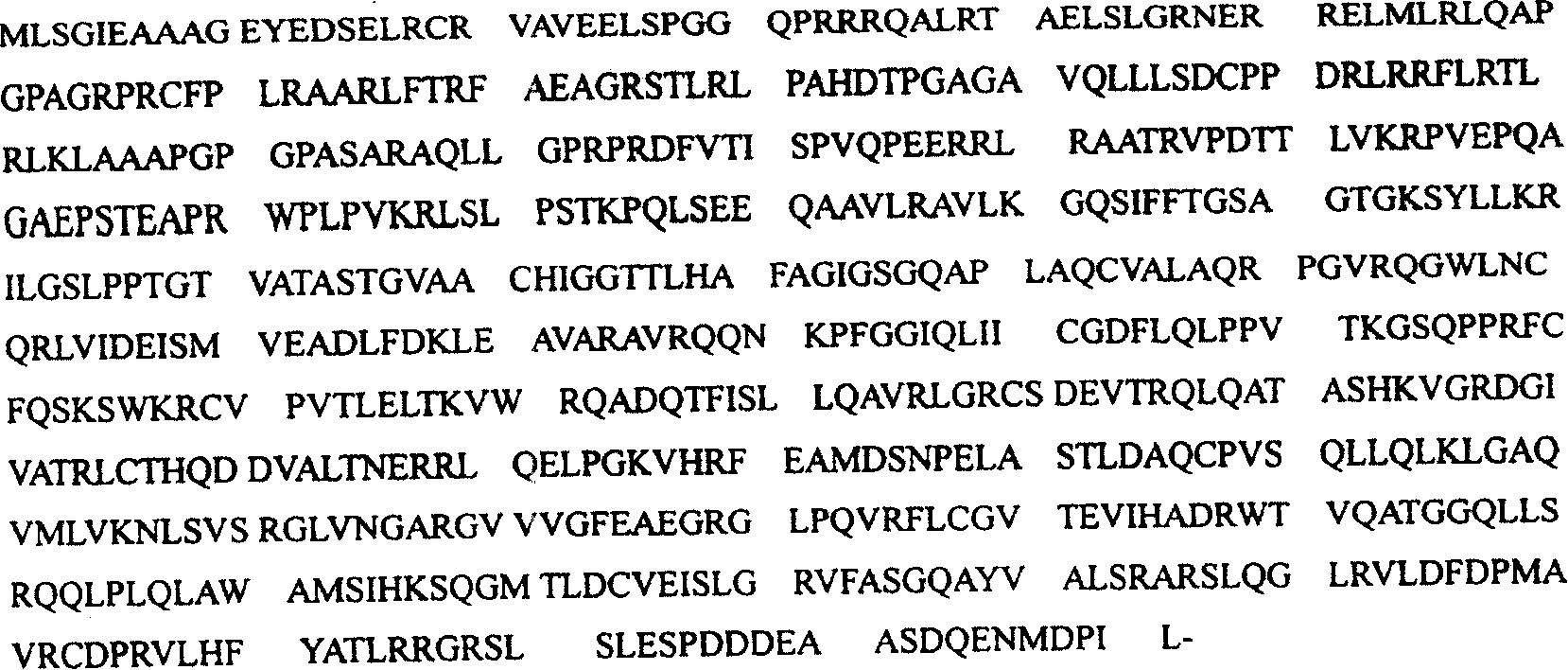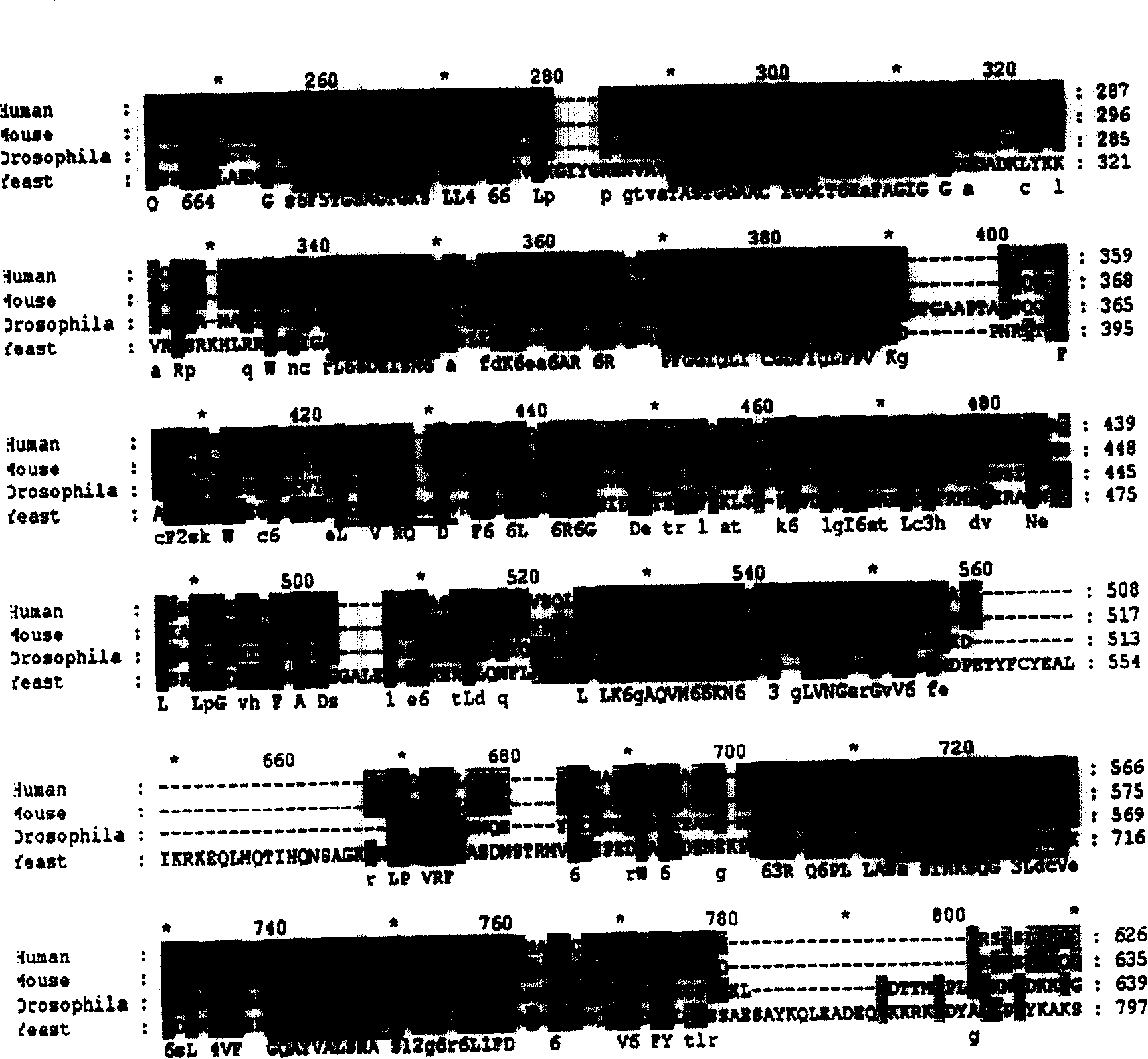Human pifl gene, its coding protein and use thereof
A protein and protein activity technology, applied in the fields of molecular biology and genetic engineering, can solve problems such as limiting the growth ability and shortening of transformed cells
- Summary
- Abstract
- Description
- Claims
- Application Information
AI Technical Summary
Problems solved by technology
Method used
Image
Examples
Embodiment 1
[0092] Cloning and identification of embodiment 1 human PIF1 gene
[0093]The inventors previously reported that human PIF1 protein has 32% homology with yeast PIF1 protein in a region of 438 amino acids (Zhou, etc Science 2000). No full-length clone of human PIF1 gene was found from the database. But the inventors found the cDNA clone gene of Drosophila. Then, the cloned genes of Drosophila were compared in the NCBI database, and the inventors found two human gene clones AK026045 and BC033254. These two sequences were compared with yeast PIF1, and the N-terminus had 9% identity and the C-terminus had 43% identity. In addition, these two cloned fragments are both distributed in the range of 11Kb on human chromosome 15, implying that they are two parts of human PIF1 gene. Therefore, the inventors designed two sets of primers and performed PCR amplification from the Hek293 cDNA library to obtain a 2.1 Kb fragment. The sequencing results of these two independent clones showed...
Embodiment 2
[0094] Example 2 Preparation of four kinds of polyclonal antibodies against human Pif1 protein
[0095] In order to detect the expression of hPIF1 at the protein level, the inventors made some polyclonal antibodies. N-terminal (76aa-230aa) respectively Ag0 , middle (309aa-435aa) Ag1 , near the C-terminal (438aa-549aa) Hp43 , C-terminal (550aa-641aa) Ag2 . Four polyclonal antibodies were identified with strong specificity and high titer. These antibodies were affinity purified.
[0096] The genes corresponding to the four peptides were cloned into the pGEX (AmerPharmarcial Co) prokaryotic expression vector, transfected into Bl21 strain for expression, affinity purified with GST gel beads, and immunized into rabbits after dialysis: Take 300 μg of purified GST- hPif1 (0, 1, 2, 43) fusion protein, dissolved in 0.5mL PBS, added an equal volume of Freund's complete adjuvant (Sigma Co), mixed thoroughly, intradermally injected into 2.0kg female New Zealand white rabbits ba...
Embodiment 3
[0098] Example 3 Human PIF1 protein encodes 5'-3' DNA helicase
[0099] Since human PIF1 protein has obvious sequence homology with yeast PIF1 protein and contains 7 helicase domains[ image 3 ], the inventor wants to prove that it is a DNA helicase. The coding sequence of hPIF1 gene was cloned into bacterial, yeast and baculovirus expression vectors simultaneously. In all three expression vectors, the inventors detected the overexpression of recombinant PIF1 protein, however, the inventors only purified hPIF1 protein in the yeast expression system. The hPIF1 cDNA clone yeast expression vector pEG(KT), [this system expresses the recombinant Rrm3p and Pfhlp (Zhou et, al 2003, Teng et, al2003)], make pEG(KT)-hPIF1, transform this plasmid To the yeast strain BCY123, as shown in the figure, the hPif1-GST fusion protein was expressed under the induction of galactose. The fusion protein was affinity purified with GST gel beads. 【 Figure 5 a]
[0100] Because the helicase uses ...
PUM
 Login to view more
Login to view more Abstract
Description
Claims
Application Information
 Login to view more
Login to view more - R&D Engineer
- R&D Manager
- IP Professional
- Industry Leading Data Capabilities
- Powerful AI technology
- Patent DNA Extraction
Browse by: Latest US Patents, China's latest patents, Technical Efficacy Thesaurus, Application Domain, Technology Topic.
© 2024 PatSnap. All rights reserved.Legal|Privacy policy|Modern Slavery Act Transparency Statement|Sitemap



